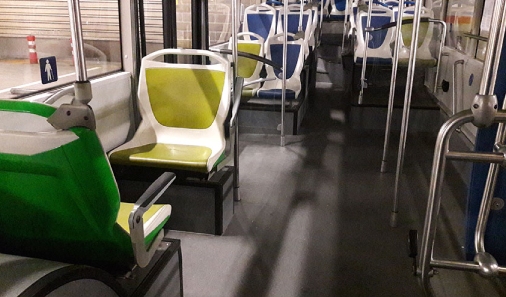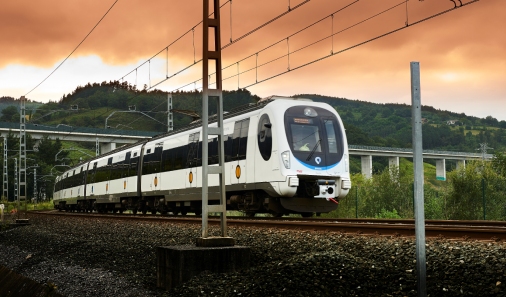Donostia-San Sebastián is an easy city to stroll around, and in fact many people get around on foot (45%) or by bike (17%). The local buses are also very popular (19%) because they connect all areas of the city, and are as sustainable as they are access-friendly.
100% of the city buses are access-friendly, and are fitted with the last word in technology to ferry those with mobility problems, the hard of hearing, or those with impaired vision. They have a platform for passengers to get on, and they have no difficulty with this because the buses have ramps for those with restricted mobility. They also have seating reserved for different groups.
DBUS, the local bus company in Donostia-San Sebastián, has been working on inclusion for years, bolstering its fleet of access-friendly buses.
From horse-drawn carriages to electric buses
DBUS goes back 135 years. Since its beginnings in 1886 with a fleet of horse-drawn carriages to the modern electric/hybrid buses nowadays, DBUS has evolved on a constant basis to provide a better service for the community.
The current DBUS fleet boasts more than 130 buses of all types, from articulated vehicles to minibuses to negotiate the city's narrower confines, for example... Additionally, more than half the 12-metre fleet is now either hybrid or electric, indicating a commitment to environmental sustainability.


Seating reserved for PRM passengers
All DBUS buses have seating reserved for people with restricted mobility, including the elderly, people with permanent or temporary mobility difficulties due to physical injuries, those with sensory or organic disabilities, guide-dog users and pregnant women.


Metro - Topo
Donostia's metro links up with the network of regional trains arriving from the border town of Irún, and the people of Donostia call it the "TOPO" (mole) because of the tunnels along this route.
The mole connects the city's districts with a run frequency of 7.5 minutes.


NaviLens
The new bus stop and metro shelters operate the NaviLens guide system. This is a system of QR codes that can be read from a considerable distance, and they enable the visually impaired to locate the stops without any need for assistance.
The signage system uses voice-overs to obtain the contextualised information available, such as, for example, the name of the stop, arrival of buses and trains in real time, and their destinations.

Taxi
Town Hall Regulations stipulate that the minimum percentage of adapted taxis must be 5%, but the real percentage is 6.8%.
The Vallina company has 17 adapted vehicles
